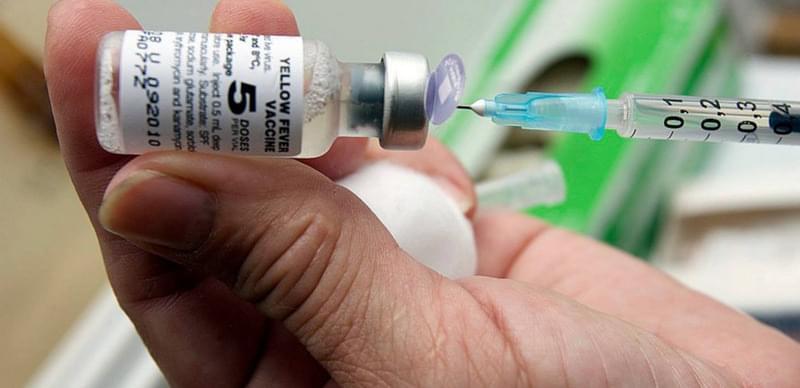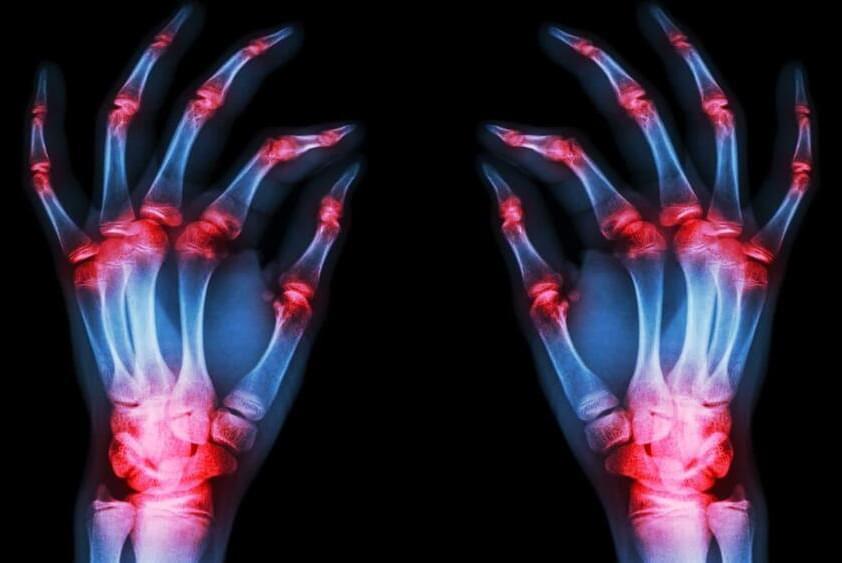Primates given an experimental jab against the virus are less susceptible to illness after only a few days.



Yellow fever epidemics are happening across Nigeria spreading state by state. The yellow fever is another haemorgic disease like ebola.
Over 160 million people, more than half of Nigeria’s current estimated population, are at risk of yellow fever in the country, reports by the World Health Organisation Africa Region have recently highlighted. Lately, the yellow fever virus has become of serious global health concern more because the wakes of its historic outbreaks are trailed by devastating outcomes.
The WHO says the virus is spreading rapidly across Africa, warning that the rising trend could cause an epidemic in Nigeria particularly, mainly because of its large population. Consequently, it issued an advisory for travellers to and out of Nigeria to consult their healthcare provider on precautionary measures required against the virus if need be.
The Yellow fever virus is endemic in tropical areas of Africa and Central and South America. The disease is a potentially fatal disease, as half of its patients in the toxic phase die within seven to 10 days.
Alcohol Fermentation or ethanol fermentation is a biological method wherein the sugar gets transformed into carbon dioxide and alcohol.
This Video Explains Alcoholic Fermentation.
Ethanol fermentation, also called alcoholic fermentation, is a biological process which converts sugars such as glucose into cellular energy under anaerobic conditions and producing ethanol and carbon dioxide as by-products.
Thank You For Watching.
Please Like And Subscribe to Our Channel: https://www.youtube.com/EasyPeasyLearning.
Like Our Facebook Page: https://www.facebook.com/learningeasypeasy/
Join Our Facebook Group: https://www.facebook.com/groups/460057834950033
Support Our Channel: https://www.patreon.com/supereasypeasy
Recent technological advancements have paved the way for the creation of increasingly sophisticated robotic systems designed to autonomously complete missions in different familiar and unfamiliar environments. Robots meant to operate in uncertain or remote environments could greatly benefit from the ability to actively acquire electrical power from their surroundings.
Researchers at Worcester Polytechnic Institute, Imperial College London, and University of Illinois Urbana Champaign have recently developed a new robotic system that can visually rearrange its surroundings to receive the maximum amount of energy from a given power source. This robot, presented in a paper pre-published on arXiv and set to be presented at the IEEE International Conference on Robotics and Biomimetics, works by drawing electrical circuits using conductive ink.
“Our PLOS ONE work started off as a quite philosophical thought experiment,” Andre Rosendo, the professor who carried out the study, told TechXplore. “Nietzsche claims that human’s primal instinct is power, and survival is just a condition sine qua non we couldn’t reach that final goal. Based on this idea, we started to devise experimental settings where our robot could not only act to survive, but to thrive.”
What if humans were gods instead?? Join us… and find out more!
Subscribe for more from Unveiled ► https://wmojo.com/unveiled-subscribe.
In this video, Unveiled takes a closer look at one of the ultimate what if scenarios — what if humans became GODS? According to some predictions, science and technology will one day lead us to godlike power… so what will we do with that responsibility? Will we use it for good or for bad?
This is Unveiled, giving you incredible answers to extraordinary questions!
Find more amazing videos for your curiosity here:
Can Science Solve the God Equation? — https://youtu.be/YPgKH-adjik.
Are Ancient Civilisations Still Hidden on Earth? — https://youtu.be/cbtPJmJErmc.
0:00 Intro.

SUBSCRIBE to “Science Time”: https://www.youtube.com/sciencetime24
Why does our universe appear so exquisitely tuned to create the conditions necessary for life? This is a question that has troubled cosmologists and physicists for decades.
Brian Greene explains how the mind-boggling idea of a multiverse may hold the answer to the puzzle. According to Greene, if there are infinitely many universes, it shouldn’t be too surprising that one ended up with the right conditions for life.
We may seriously underestimate life’s natural tendency to behave in a particular way under different laws, constants, and boundary conditions because we are biased to assume that all possible kinds of life will resemble life as we know it.
Scientists are constantly pushing the boundaries of our knowledge. However, the multiverse theories have drawn criticism from some scientists, who warn of the danger of speculation beyond what observations can tell us.
#universe #multiverse #science.

Elon Musk tweeted a fascinating — and frankly unsettling — theory last night about how a brain parasite might be forcing all humans to create advanced AI.
The Tesla CEO was responding to a story from National Geographic about how toxoplasmosis, a common parasite often found in cats, seems to be causing hyenas to be reckless around predators such as lions. In a staggering and perhaps facetious leap of logic, Musk suggested that the parasite is actually what’s causing humans to create advanced artificial intelligence.
“Toxoplasmosis infects rats, then cats, then humans who make cat videos,” Musk tweeted on Friday. “AI trains achieves superhuman intelligence training on Internet cat videos, thus making toxoplasmosis the true arbiter of our destiny.”

A team of researchers in the United States has discovered a novel mechanism in which a key protein drives the inflammatory damage associated with rheumatoid arthritis. The foundational finding is hoped to direct research toward entirely new pathways to treat this autoimmune disease affecting millions.
One of the most impactful rheumatoid arthritis discoveries over the past few decades was finding an immune cytokine called tumor necrosis factor‑alpha (TNF-alpha) plays a crucial role in joint tissue inflammation. Following this discovery the development of monoclonal antibody TNF inhibitors offered rheumatoid arthritis patients a completely new type of medicine to treat their condition.
But, as senior author on the new research Salah‑Uddin Ahmed explained, TNF inhibitors aren’t effective in all patients. And even then, they are not ideal long-term medicines dues to a variety of side effects.
Stelarc discusses the extended arm in this interview with Adam Ford.
“The Extended Arm is an eleven-degree-of-freedom manipulator with wrist flexion, wrist rotation, thumb rotation, individual finger flexion, with each finger splitting open, so each finger can potentially be a gripper in itself. The artist’s fingers rest on a panel of switches enabling the selection of pre-programmed sequences of finger, thumb and wrist movements. The clicking fingers, the compressed air and solenoid generate the sounds when performing. The Extended Arm extends the artist’s right arm to primate proportions. ”
Many thanks for tuning in!
Have any ideas about people to interview? Want to be notified about future events? Any comments about the STF series?
Please fill out this form: https://docs.google.com/forms/d/1mr9PIfq2ZYlQsXRIn5BcLH2onbiSI7g79mOH_AFCdIk/
Consider supporting SciFuture by:
a) Subscribing to the SciFuture YouTube channel: http://youtube.com/subscription_center?add_user=TheRationalFuture b) Donating.
- Bitcoin: 1BxusYmpynJsH4i8681aBuw9ZTxbKoUi22
- Ethereum: 0xd46a6e88c4fe179d04464caf42626d0c9cab1c6b.
- Patreon: https://www.patreon.com/scifuture c) Sharing the media SciFuture creates.
Kind regards.
Adam Ford.
- Science, Technology & the Future — #SciFuture — http://scifuture.org